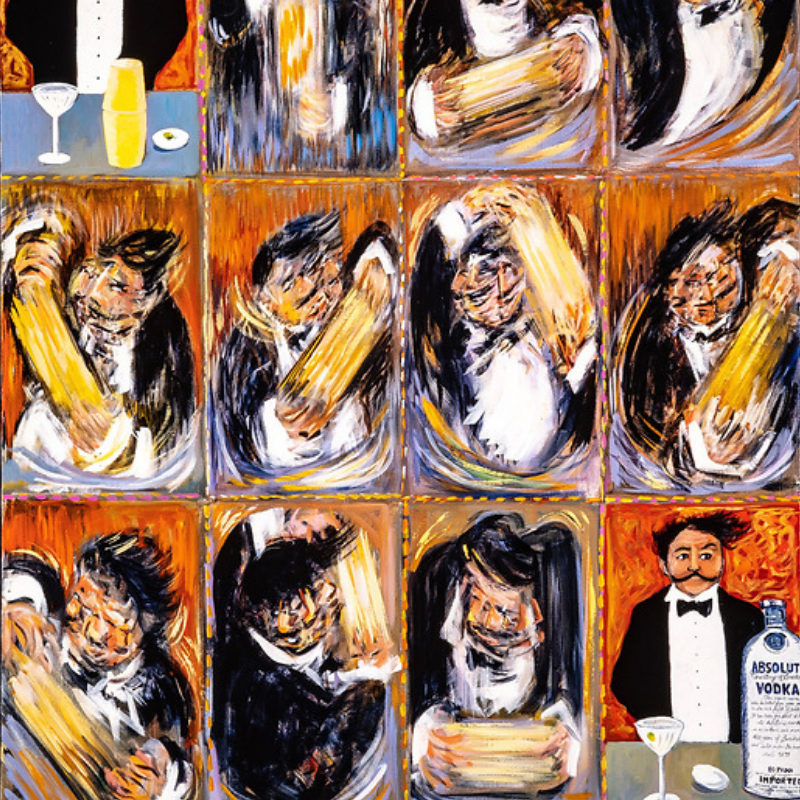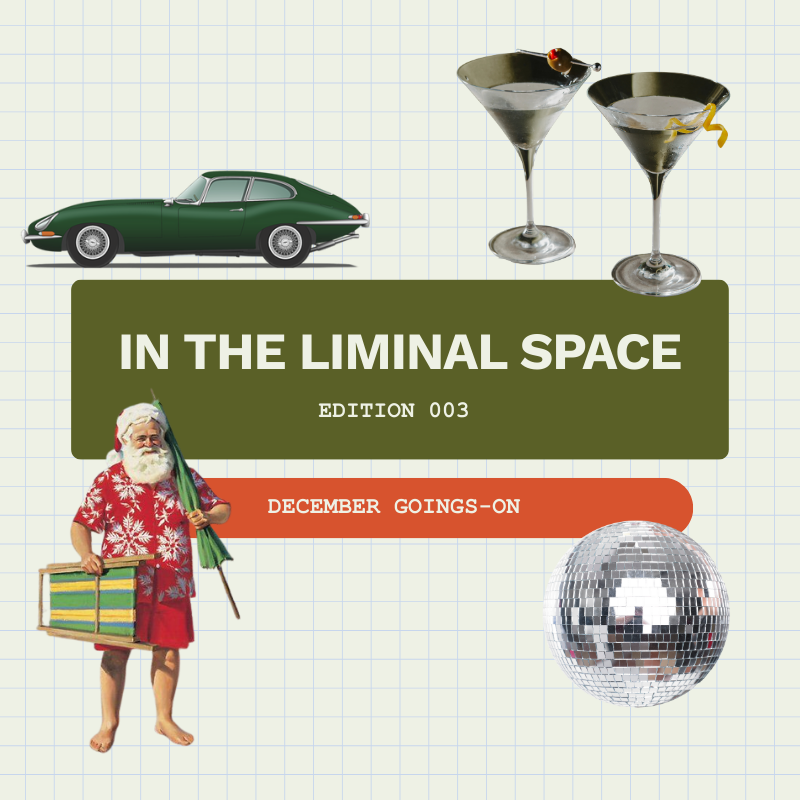A short and sweet list of perfect dirty martinis rigorously tested by our team of self-proclaimed experts.
For those familiar with Miami-based artist Antonia Wright’s work, social activism, performance, and feminism are key tenets of her art practice. Yet in ascribing artists with descriptors in this way, we sometimes fall victim to creating distance between an artist’s practice and their humanity. In experiencing Wright’s solo exhibition “I Came to See the Damage That Was Done and the Treasures That Prevail” at Spinello Projects, which remains on view through October 29, one becomes acutely aware that hers is not simply art to be hung on the wall for aesthetic appreciation but rather an active, living body of work intended to exist within society and effect change within communities. The artist places her own body at the center of her art projects, fusing her womanhood—her humanity—in the work itself.
“I Came to See the Damage That Was Done and the Treasures That Prevail” is a survey exhibition spanning many years of the artist’s work—each chapter is understood as a symbol of protest, rage, and power. “Through a multimedia practice of video, performance, photography, sculpture, sound, and light, I respond to extremes of emotion, control, and violence as they relate to systems of power in society,” Wright states. The exhibition’s urgency is rooted in the post-Roe v Wade reality that marks our current socio-political moment.
The focal point and anchor of the exhibition is a new sonification piece entitled “Women in Labor,” which utilizes audio recordings of real women during labor. For many years and through her own pregnancies, Wright has collaborated with midwives. Wright relays that she “chose to work with the midwifery community as they are a matriarchal subculture who trust in the power of the female body. Midwives believe that birth can be a euphoric experience and a way of accessing a uniquely female power.”
Wright articulates the complexity of the technique and significance of the piece in her own words:
“Women in Labor” is a generative sound art composition that uses data sonification to reflect the increase in milage women will now have to travel by state post-Roe to receive abortion services. I have partnered with a midwife to collect sounds that women make during childbirth starting with my own home birth in 2015. The midwife records the sounds her patients make in labor, she sends me the audio, and I edit the sounds into two categories: one is soft and the other intense.
To give you an example: in the state of Florida, they have changed our law to ban abortion after 15 weeks of pregnancy. A woman will now have to travel 583 miles to receive care after 15 weeks or the equivalent of driving to the state of North Carolina. When abortion was legal under Roe, a woman would have to drive 13 miles.
In the composition, the data is constantly cycling through, and after 13 miles you hear the softer sounds which sound like breathing, singing, and sometimes like lovemaking. But when 583—the new increased distance—hits you hear the very raw intensity which often sounds like screaming.”
In simultaneously analyzing each body of work individually and as a whole, it becomes apparent that this urgency has been felt by the artist and her community long before the current reproductive rights crisis came to the fore in the spring of 2022:
“Because I serve on the board of Planned Parenthood we realized that once the Supreme Court decided to take the case of Dobbs v. Jackson Women’s Health Organization they were going to overturn Roe. They wouldn’t have taken that case if they weren’t strongly considering overturning the law. So I have been thinking about a post-Roe world for a long time. Having the time to process this reality allowed me to make this piece.”

Photo courtesy of the artist and Spinello Projects.
Just across the hall, a full-bleed video is projected in an isolated gallery wherein visitors are confronted with the artist’s pregnant belly submerged in a viscous silver liquid, which ebbs and flows as the subject inhales and exhales to form a rhythmic cadence. The film entitled “And So With Ends Comes Beginnings” is a metaphor for the dualities of ecstasy and anxiety of living and bringing life into the world,” according to Wright.
Wright here spotlights another prescient social crisis: climate change. Views of the Miami skyline are superimposed on the artist’s pregnant belly, calling to mind the imminent rising sea levels and the implications of overdevelopment on the environment. The film can be understood as a metaphor for the challenges that will no doubt surface in the near future—challenges that a soon-to-be mother becomes acutely aware of in preparation for the arrival of her children.

The exhibition also displays older bodies of work that together create a constellation of tropes and symbols about protest, human rights, and the fight for justice. Consider, for instance, the symbol of a police barricade as seen in “Where there is power, there is resistance.” The sculpture is part of a series of works in collaboration with Ruben Millares that explores the sculptural and symbolic potential of standard steel barricades. In this replica, the steel bars have been replaced by fluorescent tubes in a commentary on the fragility of peace and the illusion of social order.

In yet another gallery, glass sculptures depicting a miniature hammer and a hanger are exhibited. Paired with cyanotypes depicted with shattered glass, this gallery elevates glass as a key feminist symbol, harkening back to 1912 when “the Suffragettes smashed windows across the city of London to fight for the right to vote. I physically smashed glass with a hammer over chemically treated paper to create photograms responding visually and viscerally to this incendiary moment in American history. Through the action of smashing, I aim to evoke the vulnerability and strength of the human body and show the future as a smashed glass ceiling.”
The hammer—a lead crystal glass cast of the artist’s young daughter’s first hammer—and the hanger further reinforce these themes. “My Daughter’s First Hammer” will enable her to smash through barriers, but it may also break in the process rendering it futile—a representation of the obstacles ahead of her. “Hang-Her” is the title of a hanger made in glass, the symbol of unsafe pre-Roe abortions.”

Beginning with her performances in 2015, “Are You Ok?” is a series of filmed performances that depict Wright publicly crying in the streets. The artist captures passerby reactions as a kind of investigation into empathy. “It explores the concept of social structure and tests our rules of behavior within different systems. In the video on view, I am pregnant which complicates the public’s reaction to a female crying in public. It is an evolution of the original performance from 2015.”

Ultimately, one ping pongs from gallery to gallery experiencing artworks that make evident the ongoing struggle, the laborious process, by which women are forced to fight against systems of power. The works on view present the visceral reality of pregnancy, breaking socially accepted, tempered stereotypes of the female body perpetuated by Hollywood and pop culture. They highlight the very real dualities of pregnancy. Despite themes of struggle, violence, and oppression, there also exists an overwhelming sense of beauty gleaned from these works. Women’s labor is critical to the perpetuation of humanity, the nurturing of the next generation, and the cycles of care and empathy all humans should be entitled to. It is in this sense that we recognize the “damage that was done”—the persisting restrictions that deny women body autonomy—yet acknowledge the “treasures that prevail”—the allies, advocates, and proponents of reproductive justice that have emerged to fight the fight.


.svg)


.jpg)


